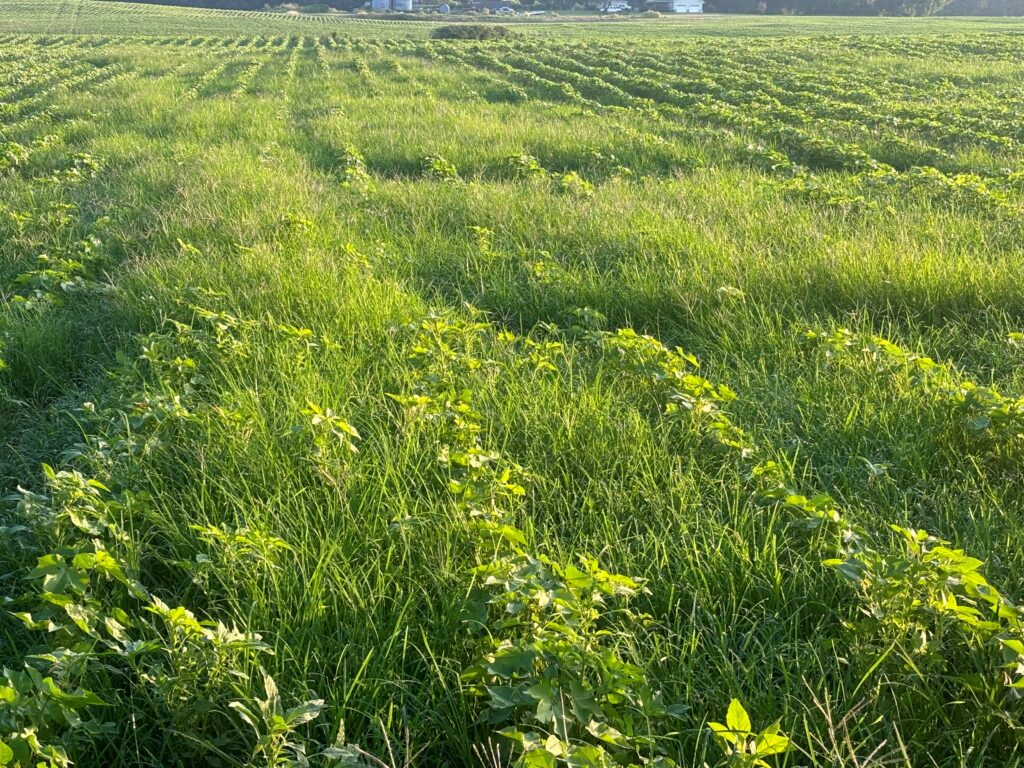
Serious infestations of goosegrass, junglerice and barnyardgrass have proven to be way too persistent in many cotton and soybean fields (Picture 1). Many are getting frustrated with the lack of control seen with tankmixes that contain glyphosate and/or clethodim or quizalofop. Some have asked if maybe some of these grasses have developed resistance to glyphosate, clethodim and quizalofop.
Resistance is indeed part of the reason for the lack of grass control with glyphosate. I do not believe dim or fop resistance is in the mix at this time. Rather I think there are a couple of other issues that are involved.
First, the robust rates of dicamba routinely applied to control Palmer amaranth greatly inhibits the control clethodim and quizalofop can provide on those grasses. This is definitely the case when dicamba is tankmixed with those herbicides. Moreover, the dicamba antagonism affect can linger a couple weeks. As such, clethodim or quizalofop applied even 10 days after dicamba can result in less goosegrass and junglerice control.
The other issue is the frequent showers that have delayed herbicide applications in many cases. Also in a few cases some of these applications have not gotten sufficient time on the grass before a rain event washes the herbicide off the leaf.
As far as management going forward the best approach is to use a high rate of clethodim applied with a good COC, preferably applied about 10 days after any dicamba application.

